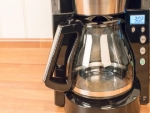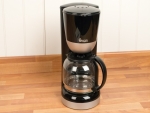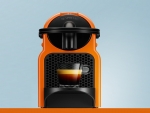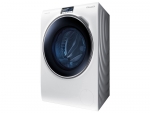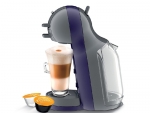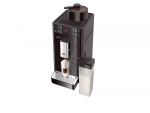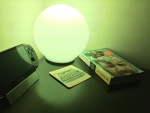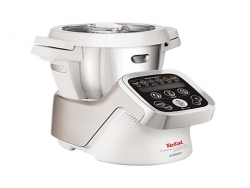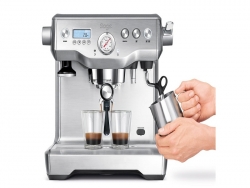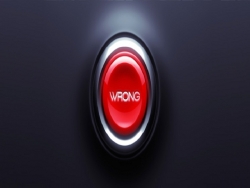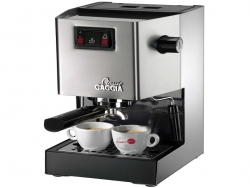Best coffee machine 2015 - buying guide and top picks

Buying guide
Here we're just looking at espresso machines, which use pressurised hot water to extract the distinctive shot of coffee. A good shot of espresso can be identified by its crema, which is the foamy head on the shot. Crema should be a few millimetres thick, have a smooth and oily-looking top, and should be reddish brown in colour. An espresso shot is a drink in its own right, but it's also the base component of a lot of other drinks, such as latte, cappuccino, Americano and macchiato.
Simply speaking, there are three different types of coffee machine available to make espresso: capsule, manual and beans-to-cup. We'll take you each type to help you make the right choice.
Capsule coffee machines
These coffee machines, as the name suggests, take specially manufactured coffee pre-packed into capsules, which you insert into the machine. The coffee is packed exactly right to brew the perfect espresso, so there's no messing around. They're also incredibly neat and tidy, as you don't have to worry about disposing of used coffee grounds.
There are many different types of coffee capsule systems around, each of which is incompatible with each other. These include the Nescafe Dolce Gusto, Tassimo, A Modo Mio and, the best-known, Nespresso.
Of these, Nespresso is our top choice, as it has the widest range of coffee to choose from and produces the best results; we've not been impressed with the other capsule systems that we've tested. All of the coffees are rated from one to 10, based on intensity, so it's easy to pick the coffees that you like.
From a pure simplicity point of view, capsule machines are the best, as you don't need any coffee knowledge in order to make a decent cup, plus you've got a lot of variety on tap. However, there are quite a few downsides. For starters, capsules are generally quite expensive, compared to beans: Nespresso capsules range between 29p and 35p per capsule. It's still cheaper than your local Starbucks, but you'll pay less if you go for real beans.
The second problem is that you're stuck with the blends on offer. Blended coffee is chosen and picked, based on the producing company being able to keep the same flavours all year round; go for a manual or beans-to-cup machine and you can go to a coffee specialist to pick single-origin specialist beans and experience different flavours.
A lot of capsule machines don't have the ability to froth and steam milk, with only the more expensive models providing this option. This can limit your ability to make a wide range of coffee drinks.
Capsule machines are a great, no-fuss way of making decent coffee and of having a wide-choice of flavours on the go. However, the cost and limitations of capsules mean they're best for people that don't drink a lot of coffee and who aren't bothered by experimenting with real beans.
Manual espresso machines
Manual espresso machines are, for a lot of people, the only way to make coffee. As the name suggests, they need some manual work to get them set up, but once you’ve learned the right skills you can produce the best-quality espresso.
First, you need the right type of coffee. For espresso, the coffee needs to have a fine grind, so that it takes the right amount of time to extract the shot. If you're going to buy coffee beans, you'll need a burr coffee grinder; a blade grinder, will both burn the coffee and create a grind with large particles. If you're going to buy pre-ground coffee, make sure it's ground for espresso machines: most specialist coffee retailers will grind to order, so make the right choice when you buy.
With manual machines you've got an amazing choice of coffee, from speciality single-origin coffee, to dedicated blends. Typically speaking, going to a specialist coffee retailer will give you the widest range of options, so experiment and find what you like to drink.
With the right type of coffee, it's all about technique and what you do with it. Manual machines have a group handle, which is where you pour the ground coffee, before clipping it into the group head where the pressurised water comes out.
Before you insert the group handle into the machine, the coffee has to be tamped, compacting the grounds together and creating a flat top. You don't need a lot of pressure to do this. Some machines have automatic tamping systems, but we've yet to find one that's as good as manually doing the job. If you tamp too much, the coffee takes too long to extract and you'll end up with a thin crema and burnt coffee; tamp with not enough pressure and you'll end up with light, foamy crema and watery tasting coffee. It can take a bit of experimentation to get it right, but it's easy to tell a good shot of espresso from a bad one.
The final shot of espresso should be the right temperature, which for espresso is around 60-65C. This is considerably cooler than instant coffee, but espresso should be drinkable right from the machine. For this reason, if you want to make a longer drink, such as an Americano or Long Black, you should add hot water (from a kettle or from the machine itself), in order to preserve temperature.
It's wise to allow the machine to heat up for a few minutes first, while flushing hot water through the group head and empty group handle can help pre-heat all of the components first. Look for a machine with a cup warmer on top, so you can pre-heat your cups.
Although a shot of espresso is ideally 30ml, with a manual machine you've got manual control over how long you pour for, so you can pull a longer shot to weaken the flavour (or pour a double). If you want to make longer drinks, as described above, it may be more convenient to pour your coffee directly into a larger mug. Check our reviews to find out the clearance underneath the group head, as some machines don't have a lot of clearance, so you may need to buy dedicated espresso cups.
Most machines come with separate filters that clip into the group handle. These are usually sized for one or two shots of espresso, allowing you to pour a single or double shot, or two single shots at once. For ease, manual espresso machines can mostly be used with Easy Serve Espresso (ESE) pod. These look a little like tea bags, only the coffee is more tightly packed (perfect for espresso). They're convenient, but if that's the most important factor buy a capsule machine instead.
When looking at specs, don't be misled. The ideal pressure to produce espresso is 9bar, but most home machines are rated at 15bar or 19bar. This is the peak pressure and the overhead is there to ensure that the right pressure can be delivered to the coffee consistently.
The number of boilers is important. Most home machines have a single boiler. This means that they can pour espresso or create steam, but not both at the same time. For a single boiler to create steam for frothing milk, it has to increase the heat of its boiler; once you've steamed the milk, you have to vent the steam through the machine or the water will be too hot to make coffee and you'll end up with burnt espresso. If you're making milk based drinks, it makes sense to froth the milk first to a higher temperature, making the espresso second, preserving the temperature of the entire drink.
Dual-boiler machines are rarer and more expensive. These have a single boiler at espresso temperature and a single boiler at steam temperature. This means you can make espresso and froth milk at the same time. This reduces the amount of time it takes to make milk-based drinks. Unless you're really into milky coffee, though, a single-boiler machine will make more sense.
Bean-to-cup machines
Bean-to-cup machines are designed to give you the best of both worlds: access to coffee beans and the huge variety, but without any of the messing around of using a manual machine. The machines have a hopper to hold your beans, which are then ground on demand, tamped automatically and poured into a cup, all at the touch of a button. The used grounds are then poured into an output bin, which has to be emptied regularly.
All of the points above stay true for bean-to-cup machines. So, an espresso shot should have the right crema and be poured at the correct temperature. The machine will take care of most of this for you, but you do have some control over the final coffee. Don't get carried away by the rated pressure of a machine, either. Most will be rated at 15bar, but the ideal espresso requires just 9bar - the additional volume is overhead, required to produce a smooth flow.
Look for an intensity control to set how strong you want your espresso. This varies the amount of coffee used to pour a shot. Next, you can manually adjust the grind on the beans, which is useful if you find that the coffee is either too watery or tastes a little bitter.
Our reviews will tell you the size of mug that you can fit underneath the spout. Look for more clearance if you want to pour a long drink directly into a mug, which is an option on most bean-to-cup machines.
Cheaper machines come with a manual milk frother, requiring you to use the wand and manual controls to heat your own milk. These are a little trickier to learn, but with a milk thermometer and a bit of practice you'll be pouring perfect milk drinks in no time.
As with manual models, a beans-to-cup machine with a single boiler has to increase its temperature to make steam to froth coffee. This takes time to do, and means that the steam has to be vented (automatically in most cases) in order to make another shot of coffee. For quicker milk drinks and more flexibility, a dual-boiler machine is best, as it can produce espresso and steam at the same time.
More expensive machines have automatic milk frothers. All you have to do is add milk to the milk container and select the type of coffee you want; the machine does all of the work and pours out everything for you. It's very clever, but expect to pay a lot of money for a machine that can do everything.
For the convenience of beans-to-cup, expect a bit less flexibility, as you have to set the machine to deliver the exact volume for your cup sizes. Look out for the size of water reservoir. You'll want at least 1L, as this will mean that you have to refill the machine less often.
Beans-to-cup machines are more expensive than manual machines and, generally speaking, don't produce quite as good espresso. However, if you want to use real beans and don't want the mess and learning curve of a manual machine, they're the best option.
See more: http://usready.com/home-appliances.html
Posted by Hữu Lợi Tags: appliances, Best coffee machine, Best coffee machine 2015, buying guide, Capsule coffee machines, Home, Home appliances, Manual espresso machines, top picks


